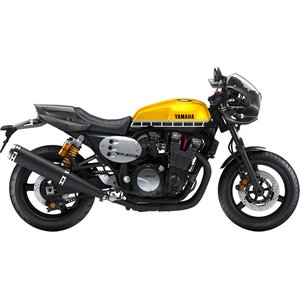Yamaha XJR 1300 Racer (2015-2016): A Retro-Inspired Muscle Machine Reimagined
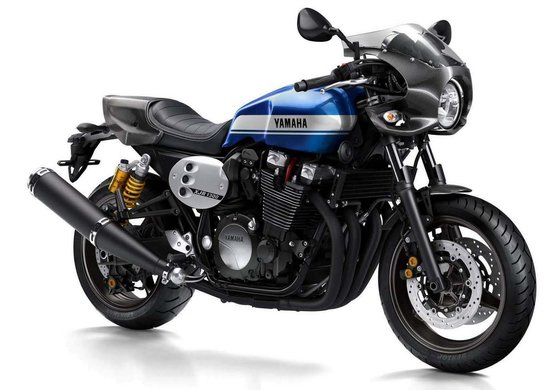
Introduction
The Yamaha XJR 1300 Racer isn’t just a motorcycle—it’s a statement. Part of Yamaha’s "Sport Heritage" lineup, this 2015-2016 model generation bridges the gap between classic café racer aesthetics and modern engineering grit. Designed in collaboration with custom shops like Wrenchmonkees and Deus Ex Machina, the XJR 1300 Racer caters to riders who crave the raw charisma of old-school air-cooled engines but refuse to compromise on contemporary performance. With its clip-on handlebars, carbon fiber accents, and Öhlins suspension, this bike feels like a factory-built custom—a rare blend of nostalgia and purpose.
Let’s dissect what makes this machine tick, how it rides, and why it still turns heads in a world obsessed with electronic rider aids and liquid-cooled efficiency.
Engine & Performance: The Heart of a Brute
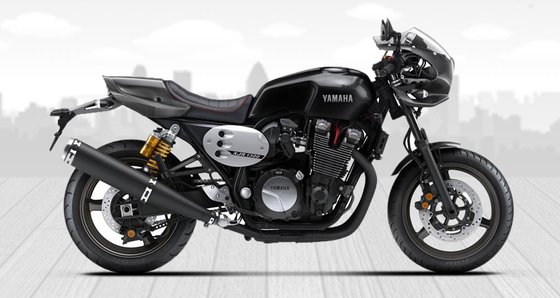
At the core of the XJR 1300 Racer lies a 1,251 cc air-cooled inline-four engine—a relic of a bygone era, yet fiercely relevant. This DOHC powerplant churns out 98 HP at 8,000 RPM and a muscular 108 Nm (80 lb-ft) of torque at 6,000 RPM. Those numbers might seem modest compared to modern hyper-nakeds, but the XJR’s charm lies in its delivery. The throttle response is immediate and analog, with a linear power curve that pulls like a freight train from 3,000 RPM onward. There’s no turbo lag, no traction control nannies—just pure mechanical feedback.
The air-cooled design adds character. You’ll feel the engine heat radiating at stoplights—a small price to pay for the symphony of whirring valves and the metallic clatter that purists adore. Yamaha’s fuel injection system (a welcome upgrade from carburetors) ensures crisp throttle response, though it lacks the razor-sharp precision of today’s ride-by-wire setups. The 5-speed transmission is unapologetically clunky in traffic but slots into gears with satisfying authority during spirited rides.
A standout feature is the Akrapovic 4-2-1 exhaust (standard on the Racer). It amplifies the engine’s baritone growl into a roaring crescendo at high RPMs. This isn’t just noise—it’s an auditory experience that connects you to every combustion cycle.
Design & Aesthetics: Café Racer Panache
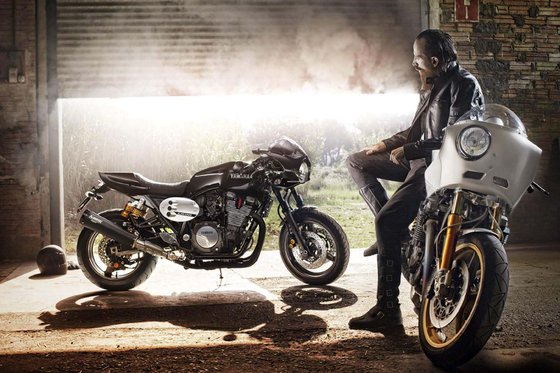
Yamaha nailed the retro-modern balance here. The Racer variant ditches the standard XJR’s flat handlebars for clip-ons, paired with a low-slung carbon fiber seat cowl and a minimalist LED taillight. The bodywork is sparse, revealing the steel double-cradle frame and that hulking engine. Matte black finishes dominate, accented by gold Öhlins shocks and subtle Yamaha Speed Block graphics in blue, gray, or black (color options vary by year).
The 830 mm (32.6-inch) seat height is accessible for most riders, though the café racer posture demands flexibility. With your knees tucked and wrists angled low, the riding position is aggressive—perfect for carving corners but punishing in traffic. The narrow, sculpted seat offers little padding, reminding you this bike prioritizes style over long-haul comfort. Still, the analog gauge cluster (with a digital inset for odometer readings) and bar-end mirrors reinforce the vintage vibe.
Handling & Dynamics: A Study in Contradictions
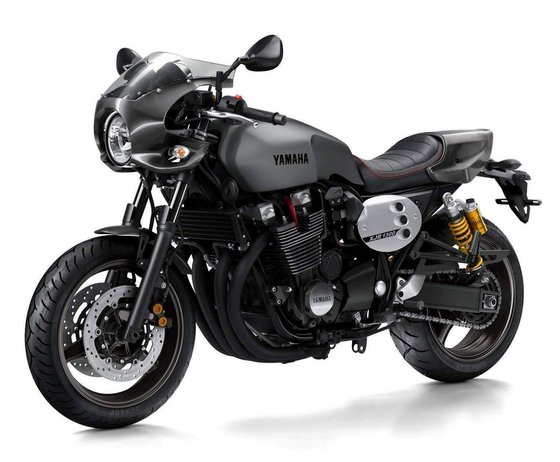
Weighing in at 240 kg (529 lbs) wet, the XJR 1300 Racer isn’t a featherweight. Yet, Yamaha’s steel chassis and suspension tuning mask that heft surprisingly well. The DLC-coated 43 mm forks and Öhlins rear shocks (rebound-adjustable) provide a firm but compliant ride. Over broken pavement, the suspension absorbs impacts without wallowing, while aggressive cornering sees the setup tighten up predictably.
The steering geometry—25° rake and 100 mm (3.9-inch) trail—strikes a balance between stability and agility. At low speeds, the clip-ons make U-turns a chore, but once you’re rolling, the bike carves through bends with the poise of a lighter machine. The 120/70-ZR17 front and 180/55-ZR17 rear tires offer ample grip, though the Bridgestone Battlax rubber feels dated compared to modern sport-touring compounds.
Braking is handled by dual 298 mm front discs with 4-piston calipers and a single 245 mm rear disc. The initial bite is strong, but lever feedback lacks progression, requiring a firm squeeze during hard stops. ABS is conspicuously absent—a reminder of this bike’s old-school ethos.
Competition: How Does It Stack Up?
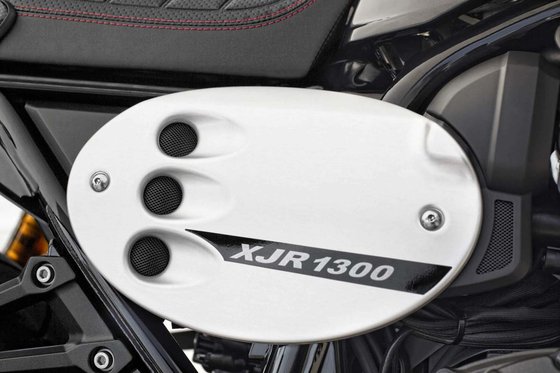
The XJR 1300 Racer occupies a niche between retro standards and muscle nakeds. Key rivals include:
- Kawasaki Z900RS (2018-Present): More refined, with a liquid-cooled 948 cc engine and modern electronics. The Kawasaki wins on comfort and tech but lacks the XJR’s visceral engine character.
- Triumph Thruxton 1200 (2016-Present): A true café racer with a 1,200 cc parallel-twin. The Thruxton offers better cornering clearance and premium finishes but sacrifices the XJR’s inline-four soundtrack.
- Honda CB1100 (2013-2017): Honda’s air-cooled inline-four is smoother and more polished, yet it feels sanitized next to the Yamaha’s raw edge.
The XJR’s ace card is its customization potential. With bolt-on parts from Rizoma and a vast aftermarket, it’s easier to personalize than its rivals—a boon for riders craving individuality.
Maintenance: Keeping the Beast Alive
Ownership demands mechanical sympathy. Key considerations:
- Oil Changes: Use 3.2L of SAE 10W-40 (API SG-rated) every 6,000 km (3,700 miles). The wet sump system is straightforward for DIYers.
- Valve Adjustments: Check every 12,000 km (7,500 miles). Intake valves: 0.11–0.15 mm (0.004–0.006 in), exhaust: 0.16–0.20 mm (0.006–0.008 in).
- Chain Care: The 110-link chain thrives with regular lubrication. Adjust slack to 25–35 mm (1.0–1.4 in).
- Tire Pressures: 2.5 bar (36 psi) front, 2.9 bar (42 psi) rear—critical for handling given the bike’s weight.
- Brake Fluid: Flush with DOT 4 annually to prevent sponginess.
The air-cooled engine runs hot, so frequent coolant checks aren’t needed—just ensure clean oil and proper valve clearances. For upgrades, consider MOTOPARTS.store’s Öhlins fork springs or NGK DPR8EIX-9 iridium plugs to sharpen performance.
Conclusion
The Yamaha XJR 1300 Racer is an anomaly—a bike that shouldn’t exist in an era dominated by emissions regulations and ride modes. Yet here it is: a throbbing, unapologetic celebration of motorcycling’s golden age. It’s not the fastest, lightest, or most comfortable bike in its class, but it’s one of the few that feels alive beneath you. Every vibration, every exhaust note, every twitch of the handlebars tells a story.
For riders seeking a canvas to modify or a daily rider with soul, the XJR 1300 Racer delivers. Just don’t expect it to apologize for its quirks. As the saying goes: “They don’t make ’em like this anymore.” And they probably never will again.



